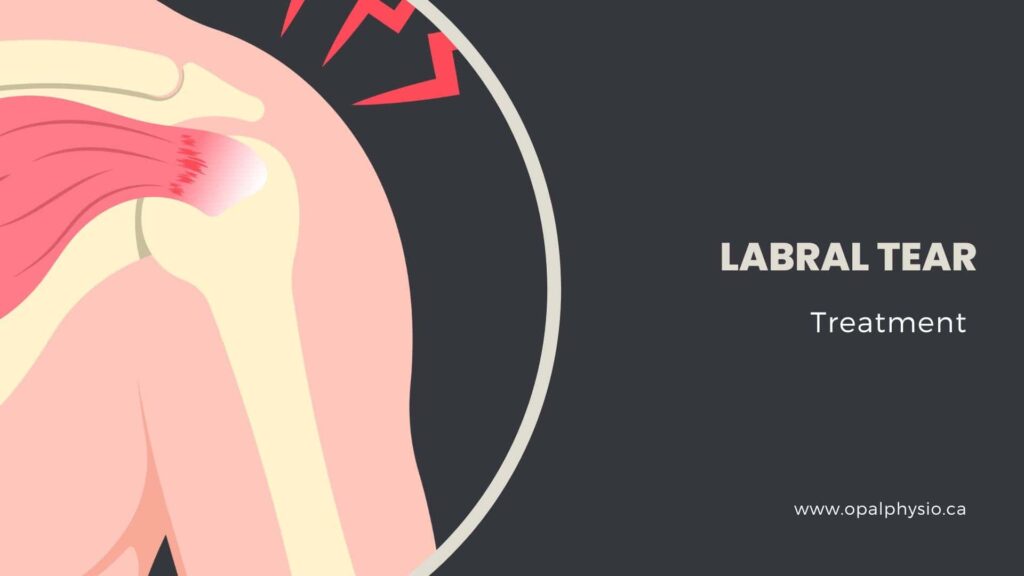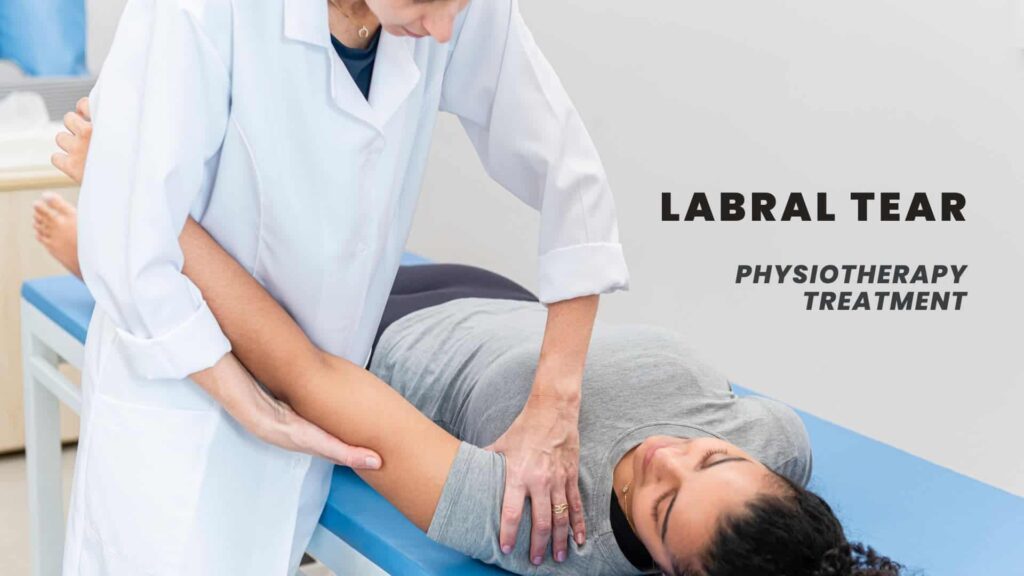Labral Tear Physiotherapy Treatment
Labral Tear
A labral tear is a painful condition that can occur in any area around the hip or shoulder joint. The labrum is a ring of cartilage that lines the ball-and-socket joints of the shoulder and hip. Labral tears occur when the labrum becomes damaged or detached from the socket bone. They can be caused by any heavy activity, including sports or from a fall.
When the labrum is torn, it can cause pain, instability, and decreased range of motion in the hip or shoulder joint. This can lead to reduced strength and function in daily activities.
Physiotherapy helps alleviate pain, reduce functional loss, recover full mobility, and help you return to your activity at the best capacity. Learn more about how our physiotherapist can help with your labral tear pain.

What is a Labrum?
A labrum is a fibrocartilaginous ring-shaped structure that surrounds a bone’s socket. It is the most common bony ring in the body and is found in joints such as the hip and shoulder. The labrum helps to provide stability to the joint and acts as a cushion.
The labrum allows your hip and shoulder to move freely without damaging surrounding structures such as muscles, tendons and bones.
Labral tears can be caused by a variety of factors, including trauma, overuse, or structural abnormalities in the hip joint.
Types of Shoulder Labral Tears
- Superior labrum from anterior to posterior ( SLAP ) tear
- Bankart Lesion
Types of a labral tear in the hip joint
- Anterior
- Posterior
- Superior/lateral
- Diffuse Labral Tear
- Radial Flap Tear
- Longitudinal Peripheral Tear
Symptoms of a Labral tear:
Symptoms of a labral tear in the hip can be:
- Sharp pain in the groin or buttock
- Pain with specific movements or activities like sitting, prolonged, or walking.
- Stiffness and loss of range of motion in the hip joint
- Hip weakness
- Clicking, locking or catching sensation when moving the joint
Symptoms of a labral tear in the shoulder include:
- Dull, throbbing ache or sharp pain deep inside the shoulder joint that worsens with certain motions
- Catching, locking, popping, or grinding sensation when moving the shoulder
- Stiffness and reduced range of motion in the shoulder
- Pain or catching sensation during overhead motions like lifting, throwing, swimming
- Night pain or pain while resting
- Sensation of shoulder instability or apprehension of dislocation
- Loss of strength in the shoulder
- Pain is often felt at the front of the shoulder near the biceps tendon.
- It can radiate down the arm if the tear extends into the biceps tendon.
Causes and Risk Factors for Labral Tears
Labral tears can be caused by
- Repetitive movements and stress on the joint from sports like hockey, golf, baseball, ballet, etc.
- Traumatic injury from falls, dislocations or accidents
- Structural abnormalities: Some individuals may have structural issues with their joints, making them more prone to labral tears. These abnormalities can include impingement, hip dysplasia, or other congenital conditions.
- Degenerative conditions like arthritis
- Athletes participating in high-impact sports have a higher risk of labral tears.
- Other risk factors include joint abnormalities and aging.
Diagnosing a labral tear typically involves a combination of physical examination, medical history review, and imaging studies like MRI or arthroscopy.
The choice of treatment depends on the individual’s specific condition, the extent of the tear, and other factors. If you suspect you have a labral tear in your hip, it’s essential to consult with a healthcare professional for a proper evaluation and personalized treatment plan.

Physiotherapy Treatment for Labral Tear
Physiotherapy plays a crucial role in the conservative management of a labral tear in the hip or shoulder. The primary goals of physiotherapy for a labral tear are to alleviate pain, improve joint function, strengthen the surrounding muscles, and enhance overall joint stability. Here are some standard components of physiotherapy treatment for a labral tear:
Physiotherapy treatment can include
The specific physiotherapy program will be tailored to the individual’s needs, taking into account the severity of the labral tear, any associated structural issues, and the patient’s goals.
Working closely with a qualified physiotherapist specializing in labral injuries is essential for the most effective treatment plan. The duration of physiotherapy will vary based on the patient’s progress, but it often extends from several weeks to several months. If conservative treatment is not effective, surgical intervention may be considered.
Do you have any hip or shoulder discomfort or pain after a labral tear? Book a physical therapy evaluation with one of our qualified professionals. Our physiotherapist at Opal Physio can help with your labral tear treatment, whether you plan to receive therapy to manage it conservatively or just had surgery. We are here to help with your recovery.
